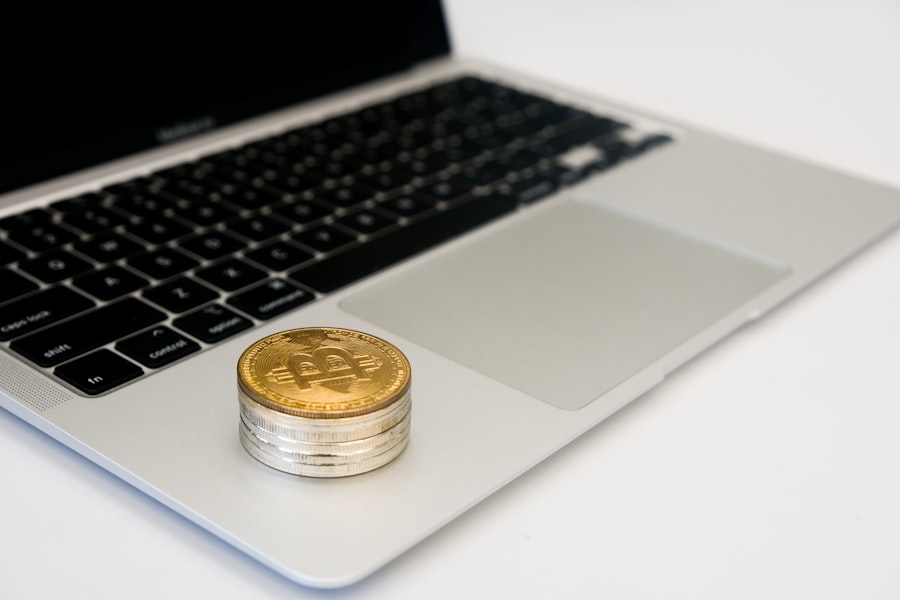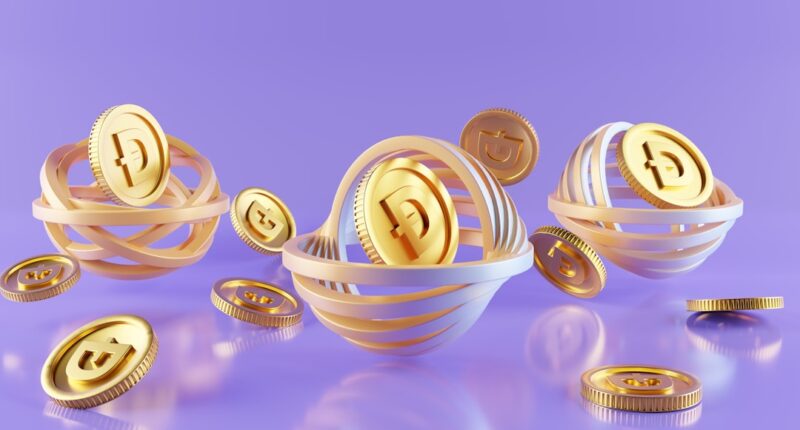In recent years, non-fungible tokens (NFTs) have surged into the mainstream consciousness, captivating artists, collectors, and investors alike. These unique digital assets, which are built on blockchain technology, represent ownership of a specific item or piece of content, ranging from digital art and music to virtual real estate and collectibles. Unlike cryptocurrencies such as Bitcoin or Ethereum, which are fungible and can be exchanged on a one-to-one basis, NFTs are distinct and cannot be replicated.
This uniqueness has given rise to a burgeoning market that has seen some NFTs sell for staggering sums, often in the millions of dollars. The allure of owning a one-of-a-kind digital asset has not only transformed the way we perceive ownership in the digital age but has also opened up new avenues for creators to monetize their work. The rapid growth of the NFT market can be attributed to several factors, including the increasing digitization of art and culture, the rise of social media platforms that facilitate sharing and promotion, and a growing interest in blockchain technology.
Artists who once struggled to find a foothold in traditional galleries are now able to reach global audiences directly through NFT marketplaces. This democratization of art has empowered creators, allowing them to retain more control over their work and earn royalties on secondary sales. As the market continues to expand, it is essential for both newcomers and seasoned participants to understand the various platforms available for buying, selling, and trading NFTs.
Each platform offers unique features, fees, and user experiences that can significantly impact one’s journey in the NFT space.
Key Takeaways
- NFTs are a rapidly growing market with unique digital assets that are bought and sold using blockchain technology.
- Different NFT platforms offer varying features, such as marketplace options, creator tools, and community engagement.
- Fees and costs for minting, buying, and selling NFTs can vary significantly between platforms, impacting overall profitability.
- User interface and experience play a crucial role in the ease of navigating and using NFT platforms for both creators and collectors.
- Security and trustworthiness are essential factors to consider when choosing an NFT platform, as they directly impact the safety of transactions and asset ownership.
Understanding Different NFT Platforms
Popular NFT Platforms
The landscape of NFT platforms is diverse and ever-evolving, with numerous options catering to different types of creators and collectors. Some of the most popular platforms include OpenSea, Rarible, Foundation, and SuperRare, each offering distinct functionalities and target audiences. OpenSea is often regarded as the largest NFT marketplace, boasting a vast array of digital assets across various categories.
Platforms for Community Engagement and Accessibility
It allows users to create, buy, and sell NFTs with relative ease, making it an attractive option for those new to the space. Rarible, on the other hand, emphasizes community governance by allowing users to participate in decision-making processes through its native token, RARI. This platform is particularly appealing to artists who wish to engage with their audience and foster a sense of community around their work.
Platforms for High-End Digital Art
Foundation and SuperRare cater more specifically to artists looking to showcase high-quality digital art. Foundation operates on an invite-only basis, creating an air of exclusivity that can enhance the perceived value of the artworks listed on its platform. SuperRare similarly focuses on curating exceptional pieces from talented artists, ensuring that collectors have access to unique and high-caliber works. These platforms often feature a more refined user experience tailored to art enthusiasts who appreciate the nuances of digital creativity.
Navigating the NFT Ecosystem
As the NFT ecosystem continues to grow, understanding the unique characteristics of each platform is crucial for both creators seeking to sell their work and collectors looking to invest in meaningful digital assets.
Comparing Fees and Costs

When venturing into the world of NFTs, one cannot overlook the various fees associated with buying, selling, or minting these digital assets. Each platform has its own fee structure that can significantly impact the overall cost of transactions. For instance, OpenSea charges a standard service fee of 2.5% on every sale made through its marketplace.
While this may seem reasonable at first glance, it is essential for users to consider additional costs such as gas fees associated with transactions on the Ethereum blockchain. Gas fees can fluctuate dramatically based on network congestion, sometimes resulting in unexpectedly high costs that can deter potential buyers or sellers. Rarible operates on a similar fee structure but also introduces a unique aspect by allowing users to set their own royalties for secondary sales.
This feature can be particularly advantageous for artists who wish to benefit from future sales of their work. However, it is important to note that while Rarible’s flexibility may appeal to some creators, it can also lead to confusion regarding pricing for collectors. On platforms like Foundation and SuperRare, fees may be higher due to their curated nature and focus on quality over quantity.
Understanding these financial implications is vital for anyone looking to navigate the NFT market effectively; being aware of potential costs can help users make informed decisions about where to buy or sell their digital assets.
Evaluating User Interface and Experience
The user interface (UI) and overall experience offered by NFT platforms play a crucial role in determining how accessible and enjoyable they are for users. A well-designed UI can make it easier for both creators and collectors to navigate the complexities of minting or purchasing NFTs. For instance, OpenSea’s interface is relatively straightforward, allowing users to browse through various categories effortlessly while providing essential information about each asset’s history and ownership.
This ease of use is particularly beneficial for newcomers who may feel overwhelmed by the intricacies of blockchain technology and digital wallets. Conversely, platforms like SuperRare prioritize a more curated experience that emphasizes aesthetics and quality over sheer volume. The design choices made by such platforms often reflect their commitment to showcasing exceptional art rather than simply facilitating transactions.
This focus on user experience can create a more immersive environment for collectors who appreciate the artistry behind each piece. However, it may also present challenges for those who are less tech-savvy or unfamiliar with navigating more complex interfaces. Ultimately, evaluating user interface design is essential when choosing an NFT platform; a seamless experience can enhance engagement and foster a sense of community among users.
Examining Security and Trustworthiness
As with any emerging technology, security remains a paramount concern in the realm of NFTs. The decentralized nature of blockchain technology offers inherent advantages in terms of transparency and immutability; however, it also presents unique challenges related to security vulnerabilities and potential scams. Users must be vigilant when selecting an NFT platform, as not all marketplaces adhere to the same security standards.
Established platforms like OpenSea and SuperRare have implemented robust security measures to protect users’ assets and personal information; they often employ two-factor authentication (2FA) and other safeguards to mitigate risks associated with hacking or fraud. On the other hand, newer or less reputable platforms may lack these essential security features, leaving users vulnerable to potential threats. Additionally, the rise of phishing scams targeting NFT collectors has become increasingly prevalent; malicious actors often create fake websites or impersonate legitimate platforms in an attempt to steal sensitive information or funds.
Therefore, conducting thorough research into a platform’s security protocols and reputation is crucial before engaging in any transactions. By prioritizing security and trustworthiness when choosing an NFT marketplace, users can protect their investments while enjoying the benefits of this innovative technology.
Considering Platform Reputation and Community

The Importance of Reputation in NFT Platforms
The reputation of an NFT platform plays a significant role in determining its desirability among creators and collectors. A strong reputation often correlates with a vibrant community that fosters collaboration and engagement among users. This, in turn, creates an environment that is conducive to artistic growth and innovation.
Community Governance and Empowerment
Platforms like Rarible have successfully cultivated a sense of community by allowing users to participate in governance decisions through their native token, RARI. This democratic approach not only empowers users but also creates an environment where artists feel valued and supported by their peers. By giving users a stake in the decision-making process, platforms can build trust and loyalty among their community members.
The Risks of Questionable Reputations
Conversely, platforms with questionable reputations may struggle to attract both creators and buyers due to concerns about trustworthiness or security issues. This can have a ripple effect, ultimately impacting the platform’s ability to grow and evolve. Engaging with online communities—such as forums or social media groups—can provide valuable insights into the experiences of other users on various platforms.
Making Informed Decisions in the NFT Space
By tapping into these collective experiences, individuals can make informed decisions about where to invest their time and resources in the NFT space. Ultimately, considering platform reputation and community dynamics is essential for anyone looking to navigate this rapidly evolving market successfully.
Choosing the Right Platform for Your NFTs
Selecting the right platform for buying or selling NFTs requires careful consideration of various factors tailored to individual needs and preferences. Creators should assess their goals—whether they aim for maximum exposure or prefer a more exclusive environment—when choosing a marketplace. For instance, artists seeking broad visibility might gravitate toward OpenSea due to its extensive reach and diverse offerings.
In contrast, those prioritizing quality over quantity may find platforms like Foundation or SuperRare more aligned with their artistic vision. Collectors must also weigh their options based on personal interests and investment strategies. Some may prioritize lower fees while others might value community engagement or curation quality more highly.
Additionally, staying informed about emerging trends within the NFT space can help users identify new opportunities as they arise. By taking the time to evaluate these various aspects thoughtfully, individuals can make informed decisions that align with their goals in this dynamic market—ultimately enhancing their experience within the world of NFTs while maximizing their potential for success.
FAQs
What are NFTs?
NFTs, or non-fungible tokens, are digital assets that represent ownership or proof of authenticity of a unique item or piece of content, such as artwork, music, videos, or collectibles, using blockchain technology.
What are the top platforms for selling NFTs?
Some of the top platforms for selling NFTs include OpenSea, Rarible, Foundation, and NBA Top Shot. Each platform offers different features and focuses on different types of NFTs.
What factors should I consider when choosing a platform to sell NFTs?
When choosing a platform to sell NFTs, consider factors such as the platform’s fees, user interface, community and audience, security measures, and the types of NFTs that are popular on the platform.
What are the fees associated with selling NFTs on these platforms?
Fees for selling NFTs vary by platform and can include gas fees, platform transaction fees, and royalties. It’s important to understand the fee structure of each platform before listing your NFTs for sale.
Are there specific platforms that cater to certain types of NFTs, such as art or collectibles?
Yes, some platforms are known for catering to specific types of NFTs. For example, Foundation is popular for selling digital art NFTs, while NBA Top Shot focuses on selling basketball-related collectible NFTs.
What are some key differences between the top NFT selling platforms?
Key differences between NFT selling platforms include the types of NFTs supported, the user interface and user experience, the community and audience, and the platform’s approach to curation and verification of NFTs.





